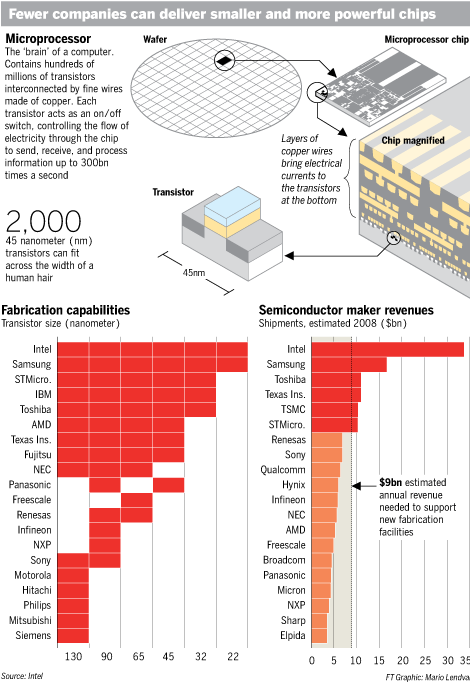Communications of the ACM
Moore's Law Hits Economic Limits

Moore's Law, formulated in 1965 by Intel Corp. co-founder Gordon Moore, may be imperiled by semiconductor industry economics.
Credit: Intel Corp.
Much attention has been given to the approaching scientific limit to chip miniaturization and the continuation of Moore's Law, but an economic limit is nearing faster than the predicted scientific limit, according to some experts.
"The high cost of semiconductor manufacturing equipment is making continued chipmaking advancements too expensive to use for volume production, relegating Moore's Law to the laboratory and altering the fundamental economics of the industry," says iSuppli's Len Jelinek. He predicts that Moore's Law will no longer drive volume chip production after 2014 because circuitry widths will dip to 20 nanometers or below by that date, and the tools to make those circuits will be too expensive for companies to recover their costs over the lifetime of production. The costs and risks associated with building new fabrication systems have already forced many producers of logic chips toward a fabless chip model, in which they outsource much of their production to chip foundries in Asia.

At the 90nm level there were 14 chipmakers involved in fabrication, but at the 45nm level that number has been reduced to nine, and only two of them, Intel and Samsung, have plans to create 22nm factories. However, Intel's Andy Bryant says that as long as demand is maintained by consumers and businesses looking for the most advanced technology, Moore's Law, and the major investments it requires, will continue to make economic sense.
From The Financial Times
View Full Article – May Require Free Registration
Abstracts Copyright © 2009 Information Inc., Bethesda, Maryland, USA 
No entries found